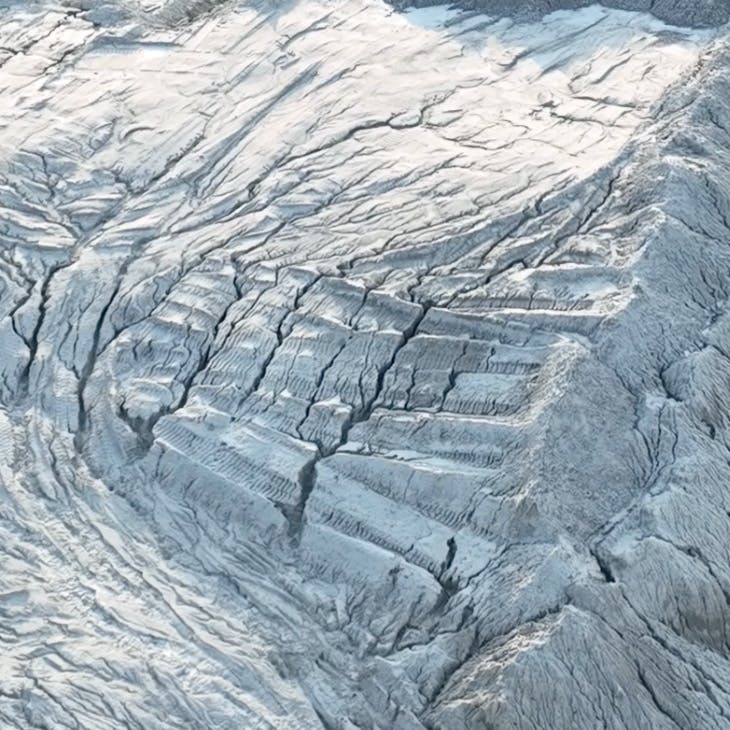Lithos
Lithos speeds up the natural process of rock weathering by spreading ultrafine waste basalt on agricultural soils.
- Pathway
- Field weathering
- Contracted tons
- 154,240
- Track
- Offtake - 2023
- Total contract value
- $57.1M
- Location
- San Francisco, CA, US
- Delivery timeline
- 2024 – 2028

The approach
Lithos accelerates the natural ability of rocks to absorb CO₂ by spreading superfine crushed basalt on farmlands and measuring the removal empirically. They source the finely ground basalt from existing quarries who produce it in large quantities as a waste by-product. They then transport this basalt to farmers, who use it as an alternative to existing, often costly inputs for soil deacidification.
The basalt rock reacts with rainwater and locks up atmospheric CO₂ as bicarbonate, which ultimately makes its way to the ocean for permanent storage. Lithos measures the dissolution of the rock over time in soil samples using mass spectrometers to quantify the carbon removed.

The case for Lithos
Enhanced weathering offers a promising path to permanent carbon removal at scale. Enhanced weathering describes a variety of approaches to accelerate the natural ability of rocks to absorb CO₂ from the air. This process normally takes hundreds or thousands of years, but by grinding up alkaline rocks like basalt to increase their surface area, and spreading them on agricultural fields to increase their exposure to ambient CO₂, the result can be achieved in just a few years. Models suggest these approaches could collectively represent up to 40% of the global carbon removal portfolio in 2050, removing 2-4 gigatons per year.
Lithos’s core innovation is its measurement technique. As an open system, enhanced weathering faces a major challenge in accurately quantifying how much carbon has been removed. Lithos is tackling this challenge by pioneering a new technique that combines soil samples with high-precision elemental measurements. This technique accurately measures the amount of carbon removed, but with fewer hardware needs, enabling Lithos to sample at a high frequency without ballooning costs.
Lithos has an impressive track record of execution. In under two years, Lithos has secured partnerships with multiple quarries and deployed on more than 80 farms across nine US states, with more than 160,000 acres on their waitlist and millions of acres of immediately deployable farmland in their network. Lithos estimates that these existing partnerships could result in ~2.1M tCO₂/year of removal in the immediate future.
Lithos has a feasible and near-term path to low-cost, high-volume removal. The speed and cost at which Lithos can deploy is not constrained by technological breakthroughs. Instead, Lithos’s path to $100/ton by 2030 relies on getting better at transport and spreading logistics, as well as developing predictive models that reduce the reliance on soil sampling. Their price today, inclusive of measurement, has already fallen 26% since they joined Frontier’s prepurchase portfolio in 2022. Thanks to the broad availability of their feedstock and its rapid weathering rate (3-4 years), Lithos has the highest potential for meaningful near term carbon removal delivery of any company across all pathways.
Still, Lithos’s successful scaleup is not guaranteed. Although the total volume of tons of CO₂ can be predicted, the weathering rates depend on hard-to-control variables like temperature, rainfall and soil type variation. Effectively managing this delivery timing uncertainty is crucial to securing buyer confidence. To make matters more challenging, analytical lab capacity may become a bottleneck as sample quantities reach hundreds of thousands per year, which could also complicate delivery timelines.
At very large scales, there are limits to all carbon removal methods, Lithos’s approach included. Even though waste basalt is currently abundant, the method’s dependence on its availability as a feedstock could become a limiting factor when scaling up to gigaton levels. Also, as Lithos reaches that level of scale, they’ll need to add farms that are further from quarries, the source of their feedstock. While there is enough farmland available for enhanced weathering to deliver gigaton-scale removal, the availability of cropland near enough to quarries could become a challenge and may require partnering with cost-effective, longer-haul rail companies and transportation.
Pricing and delivery
The total offtake amount from Frontier buyers is $57.1M for 154,240 tons. The price accounts for both the removal itself as well as measuring, reporting and verifying (MRV) that each ton is safely and permanently stored. Delivery will occur at multiple soil sampling time points following basalt spreading. More than half of the contract volume is expected to be delivered in the first two years. The agreement includes requirements for ecosystem impact monitoring, data sharing with researchers in the field, and a community benefits plan.
